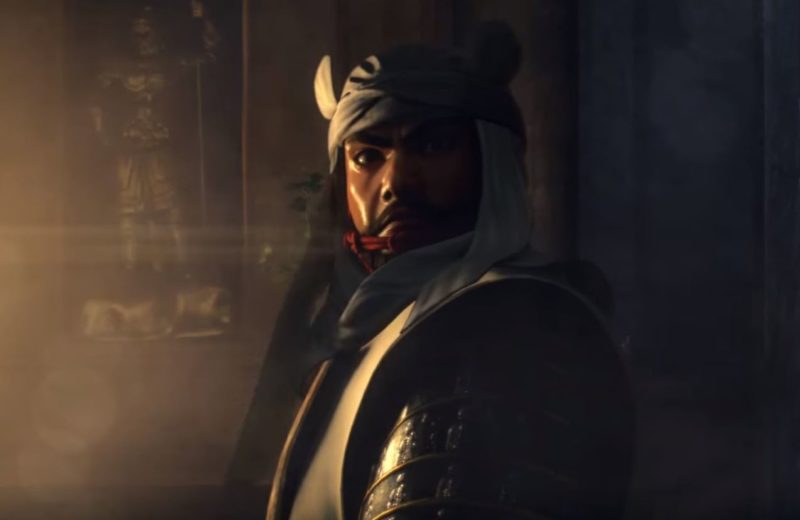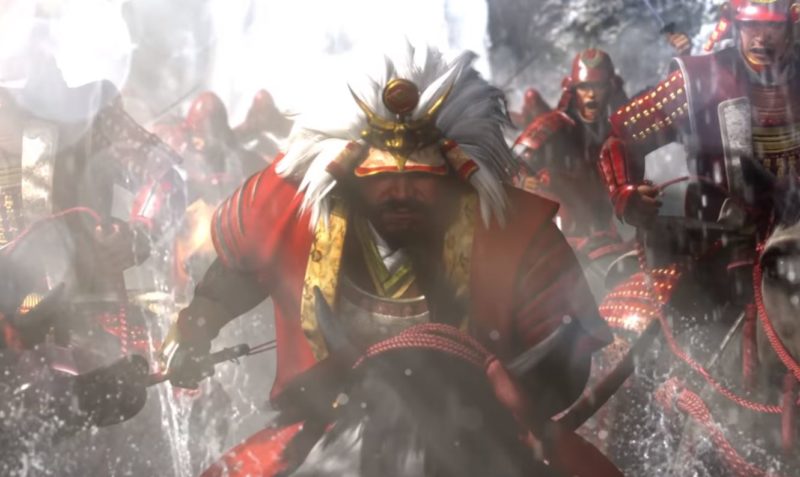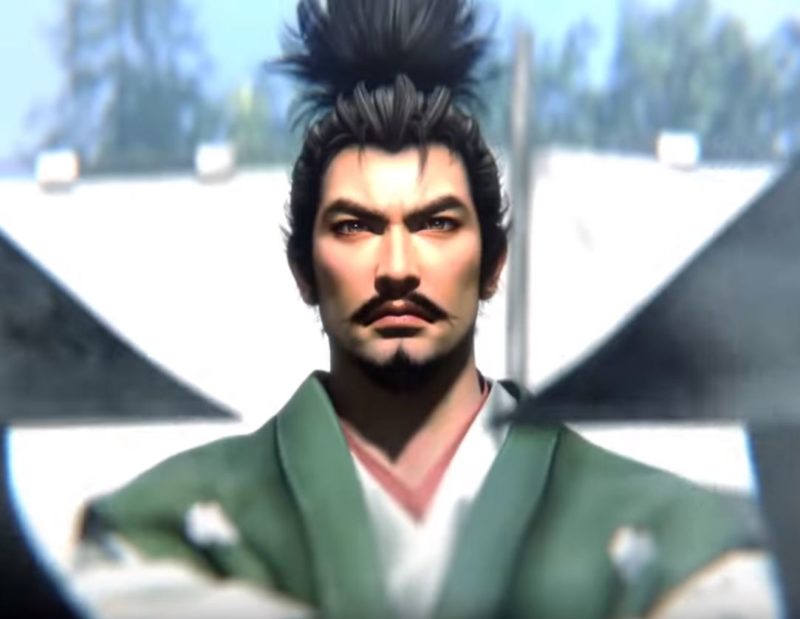
Nobunaga’s Ambition has been a staple of the turn-based, grand strategy vein of games since the series practically jump-started the genre in 1983. Nobunaga’s Ambition: Taishi is the most recent installment of Koei Temco’s now fifteen game series, and while this proves this reviewer’s first foray into the Nobunaga’s Ambition franchise, these games have had a long history. One that becomes evident when you observe how the game has been designed. The events of the game take place during Sengoku period Japan, better known as the Warring States period. Taishi allows the player to choose one of the six scenarios, select one of the many real-life daimyos that governed Japan during that age, then set about achieving daimyo Nobunaga’s ultimate goal: the unification of Japan. The player is given an immense variety of tools to make this mission a reality—engaging in warfare, deception, trade, and diplomacy to navigate the complex interweaving relations with the other factions in the game.

The player begins in command of their own faction and province and must navigate growing their own economy, bolstering their military and regional defense, building bases, and the general task of engaging with other Daimyos. Players can build alliances, form trade pacts, as well as wage outright war, which takes place in real-time, and provides a unique blend of strategy as well as balancing the numbers game necessary to outman your opponents on the battlefield. These systems are controlled through branching menus that are accessible in full during what the game calls the planning phase. In between months and seasons, the game will functionally pause the real-time action and allow the player to dictate their faction’s actions and policies. Once the player has sufficiently planned and chosen their course, they can engage the active phase and watch their decisions play out. Events occur during the active phase which the player can respond to, and the player can also pause the active phase to take actions, but the full range of features and decision making is limited. It is the planning phase where the meat of the game, the tactical decision making, and strategic know-how really become necessary. In many ways the game both expects you to outthink your opponents, while simultaneously trying to actively throw a wrench in your best-laid plans to stop you from outmaneuvering them.

Before I continue with a formal review of the game, I need to clarify two terms that I will be throwing around a lot in discussion of Taishi and playing the game. Complex is good. It is referencing a mechanic, game element, or aspect of gameplay that feels in-depth, fleshed out, and layered. Something that is complicated is overly bloated, and difficult to break down. Complicated is bad. Now Taishi trades in both the complex and the complicated in great measure, with many features falling into multiple categories—though there are most certainly features that feel exclusively good or bad. The prime example of one such simply phenomenal feature is the game’s diplomacy mechanic.
I love to play purely diplomatic sessions, as I find diplomacy a far more interesting mechanic generally since it requires so much more micromanagement. I can say of any strategy or grand-strategy game I have ever played Taishi has one of the most complex, thorough and engaging diplomacy features I’ve ever seen. To do anything with other Daimyos, save to go to war, you must build up their opinion of you through goodwill. This requires the presence of ambassadors or raising reputation with their allies—which builds up a gauge from below zero to 130. Different intervals along this gauge give you access to different partnerships and alliances, with trade agreements, military partnerships, vassaldom, and even diplomatic marriages which can be used to cement alliances. This creates one of the most thorough and engaging diplomacy systems I’ve ever played with, allowing me to juggle diplomatic exchanges with trade, and even undermine enemies military efforts by undercutting their alliances through making alliances with their neighbors. You can lend soldiers and reinforcements to allies during military conflict, and one of my favorite moments in the game was when I lent supplies to a middling trade partner while they were fighting a much larger military faction. They were so pleased with my donation of soldiers and resources that my standing with them increased by a large amount and in turn my standing with their allies. This provided me the influence necessary to make a vassal of one of the larger military power’s neighbors and open up a new military front against them. I managed to conquer their capital while they were distracted by their other enemies. This type of moment, where choices have complex networks of response and impact, make the game astoundingly fun and catch players in coveted “just one more turn” moments, where it becomes impossible to put down.

Additionally, mechanics like the Resolve system provide really cool dimensions to gameplay. All Daimyos have a resolve—a value or trait that they prioritize—which grant bonuses when used in-game. For example, certain daimyos value increasing military power, building up massive amounts of infantry. Others put stock in conquering territory through trade agreements. Some value peace above all else. Knowing your Daimyo’s resolve, playing to it, and strategically dealing with other Daimyo’s in conjunction with their Resolve is key to playing well. In turn, this helps history and new gameplay exist, interwoven, as it is reasonable to assume the historical figures of the time not only have known one another but also what it was like to deal with each other. It makes for incredibly diverse, complex gameplay, as you can cement different footholds and accomplish different tasks in the historical period simply by playing to different strengths. As a side note, a phenomenal UI decision that reflects this is that each of the Daimyo’s character menus includes a breakdown of their Resolve—providing the discerning player with all the information necessary to forge ahead.

Now, I’ve always believed games as complicated as Taishi are best served by simply diving in head first and trying to parse things out until you succeed, and maybe this stance has jaded me somewhat. When I dove into the game, I decided it was best to try out the tutorial. Frankly, it made me even more confused. It never presented any information to me that didn’t make sense, but there was simply so much mechanical information to cover all at once that it was impossible to retain anything. It was written out in small text boxes that were difficult to read and hard to make memorable. While I don’t know if there is really a more efficient way to present all this information, it provides a unique barrier to entry, as the details of gameplay are lost in how complicated and drawn out the tutorial process is. More than just this, however, the network of menus is borderline arcane if you don’t have an effective grasp on how and where to navigate. I played this game on the PS4, and while I do believe that contributed to the issues in navigation, it still proved a complicated maze of drop-downs, buttons, and attribute charts that I had to navigate as I tried to discern what different features did and how to best move back and forth between them.

Another significant issue is readability. The game throws a great deal of information at you all at once, as is necessary for a grand strategy game. While this may be a measure of my newness to the genre, but the game proved far more complicated than necessary in determining how to accomplish different tasks or why I couldn’t do things sometimes. Parsing through the information I was actually being given in conjunction with the menus proved a real challenge, one that was incredibly frustrating. I would be able to do multiple maneuvers one turn only for the next phase to prevent me from accomplishing the same action, without any clear feedback as to why. There was no juicy response or glowing icon to indicate what I was missing or why my moves were limited this time around. This created a really complicated environment where I felt like I couldn’t effectively determine what actually needed to come next. With time some of this obfuscation disappeared, and I could determine what the game was trying to tell me and reinforce. This type of complication is not one which inherently cannot be worked out or overcome, but it is one that muddies the complexity of what is inherently an engaging and interesting game. Beyond even what I have described there is a great deal in this game to explore. There is, however, an equally large barrier to entry for new members of the series, even if this game has proven to be one of the most accessible games in the franchise.

Speaking of accessibility, the Nobunaga’s Ambition: Taishi ’s most frustrating weakness is the game’s difficulty. In my experience, much of the challenge came from mastering the game and not playing it. While there are incredibly complex systems involved in the less direct methods of conquest, combat, for instance, proved simple and often boiled down to a numbers game. If you have more troops—even marginally—you are more than just likely to come out victorious. Any strategy helped if you are the one outnumbered, of course, but at the end of the day just bringing a larger army meant victory. For a game that sells itself on tactical difficulty, that was a disappointment. Additionally, trade mechanics were made significantly more complicated by being both threadbare and hard to manage directly. While some of these issues feel like active attempts on Koei Tecmo’s part to make the game easier to dive into for beginners, they leave elements of the game feeling far less polished than others. Almost like something is missing. It doesn’t by any means ruin the game, but it certainly feels less like what should be a culmination of 15 games and 34 years of development.

Overall, Nobunaga’s Ambition: Taishi is a game of both incredible depth and surprising shallowness. While an enjoyable foray into the grand strategy genre and an accessible title for newcomers to Nobunaga’s Ambition, it lacks the overall complexity and difficulty which this franchise is known for. Many mechanics are phenomenal and most challenges feel involved and worthy—particularly the diplomacy mechanic and alliance management—but any shallowness in a grand strategy title (even when included for the purpose of making the game more appealing to a broader base of gamers) feels like a disservice. That being said, the game is not bad by any stretch of the word. It is incredibly fun. Moreso, it is a real romp that can turn into hours of deep, involved gameplay. It will, however, undoubtedly disappoint some hard-line fans of the series. For this reason, I give the Nobunaga’s Ambition: Taishi a 7/10.
Check Out the Nobunaga’s Ambition: Taishi Launch Trailer:
PlayStation 4 Review
-
Overall Score - 7/107/10
I am current Junior at Carnegie Mellon University, and a deep lover of all things gaming and narrative. I play just about every game genre imaginable, but am particularly fond of story driven games and any narrative world where words have more letters than necessary. I am naturally drawn toward RPGs and Action Adventure Games, but am a huge fan of FPS titles, and competitive online games. Also developed a pretty recent addiction to turn-based and 4X strategy games. Shout out to Total War: Warhammer. Some of my favorites of all time include Dishonored, Witcher 3, Undertale, Half Life 2, and What Remains of Edith Finch. I just finished the newest God of War, and that's jumped pretty high on that list as well. As an avid writer and consummate lover of gaming, I hope that my reviews might provide meaningful insight into the games I play, or kick-start a love for narrative and gaming in others!





More Stories
DAIMON BLADES Preview for Steam Early Access
ReStory Preview for Steam
Firefighting Simulator: Ignite Releases Parker’s Story DLC for PC and Console